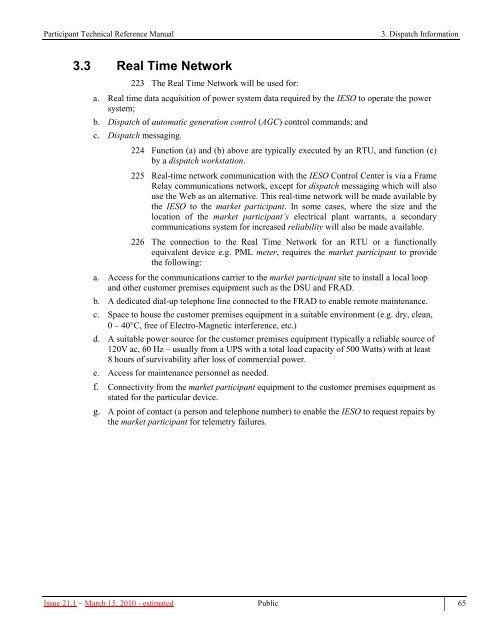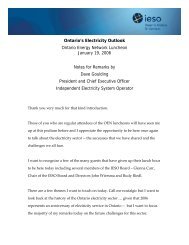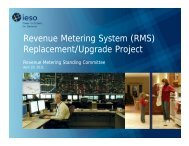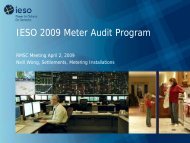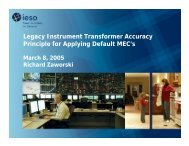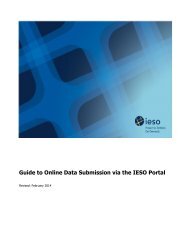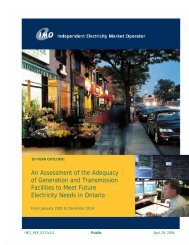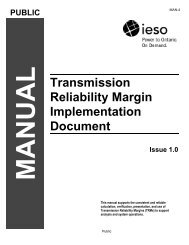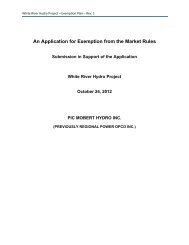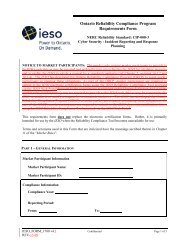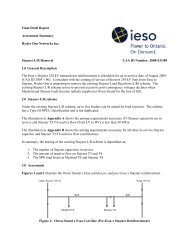Participant Technical Reference Manual - IESO
Participant Technical Reference Manual - IESO
Participant Technical Reference Manual - IESO
You also want an ePaper? Increase the reach of your titles
YUMPU automatically turns print PDFs into web optimized ePapers that Google loves.
<strong>Participant</strong> <strong>Technical</strong> <strong>Reference</strong> <strong>Manual</strong><br />
3. Dispatch Information<br />
3.3 Real Time Network<br />
223 The Real Time Network will be used for:<br />
a. Real time data acquisition of power system data required by the <strong>IESO</strong> to operate the power<br />
system;<br />
b. Dispatch of automatic generation control (AGC) control commands; and<br />
c. Dispatch messaging.<br />
224 Function (a) and (b) above are typically executed by an RTU, and function (c)<br />
by a dispatch workstation.<br />
225 Real-time network communication with the <strong>IESO</strong> Control Center is via a Frame<br />
Relay communications network, except for dispatch messaging which will also<br />
use the Web as an alternative. This real-time network will be made available by<br />
the <strong>IESO</strong> to the market participant. In some cases, where the size and the<br />
location of the market participant’s electrical plant warrants, a secondary<br />
communications system for increased reliability will also be made available.<br />
226 The connection to the Real Time Network for an RTU or a functionally<br />
equivalent device e.g. PML meter, requires the market participant to provide<br />
the following:<br />
a. Access for the communications carrier to the market participant site to install a local loop<br />
and other customer premises equipment such as the DSU and FRAD.<br />
b. A dedicated dial-up telephone line connected to the FRAD to enable remote maintenance.<br />
c. Space to house the customer premises equipment in a suitable environment (e.g. dry, clean,<br />
0 – 40 C, free of Electro-Magnetic interference, etc.)<br />
d. A suitable power source for the customer premises equipment (typically a reliable source of<br />
120V ac, 60 Hz – usually from a UPS with a total load capacity of 500 Watts) with at least<br />
8 hours of survivability after loss of commercial power.<br />
e. Access for maintenance personnel as needed.<br />
f. Connectivity from the market participant equipment to the customer premises equipment as<br />
stated for the particular device.<br />
g. A point of contact (a person and telephone number) to enable the <strong>IESO</strong> to request repairs by<br />
the market participant for telemetry failures.<br />
Issue 21.1 – March 15, 2010 - estimated Public 65


